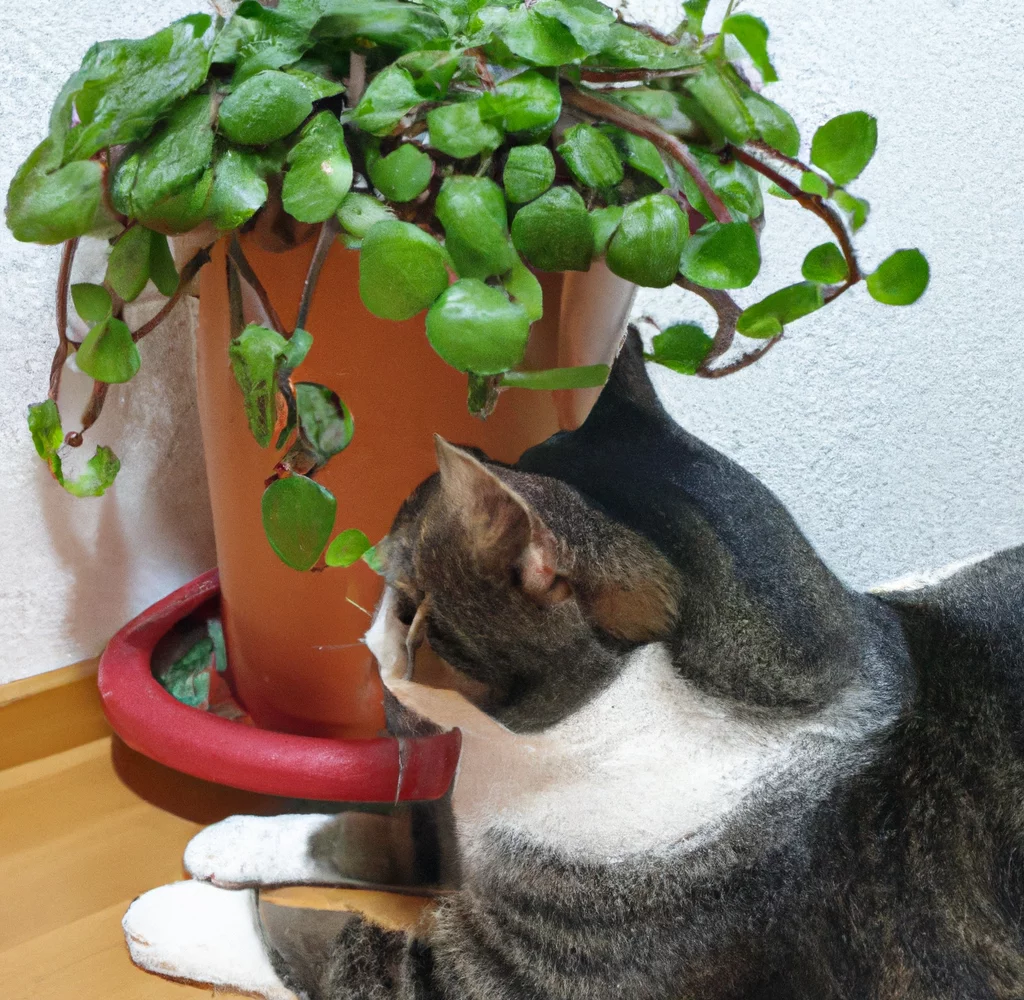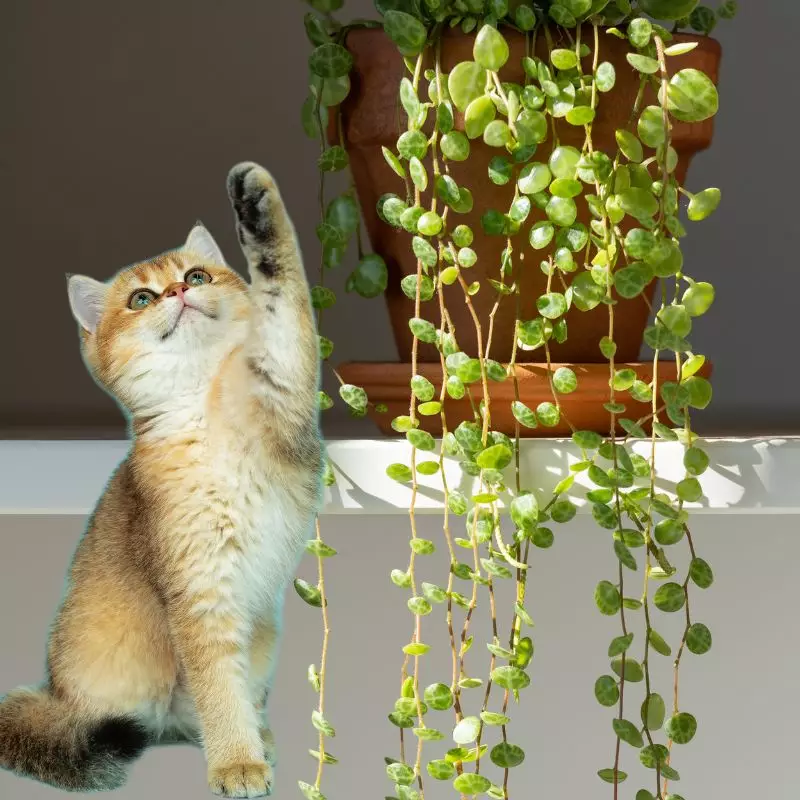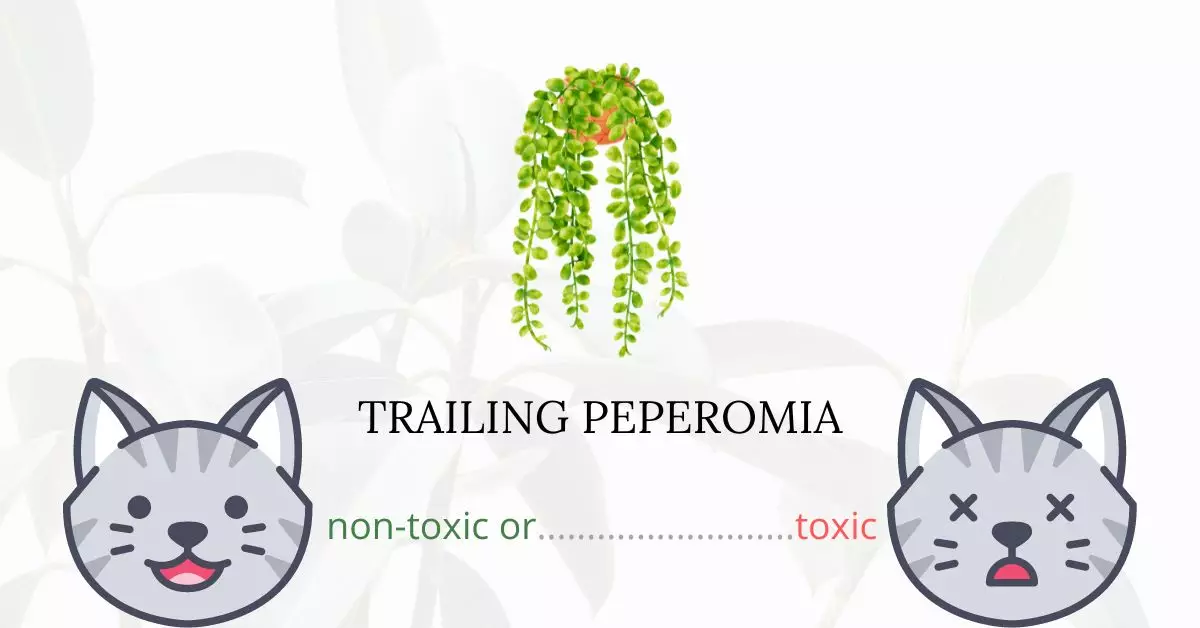No, trailing peperomia is not toxic to cats. In fact, the American Society for the Prevention of Cruelty to Animals (ASPCA) has specifically listed the trailing peperomia among the non-toxic plants for cats.
This article has been written in collaboration with a team of experienced DVMs (doctors of veterinary medicine). Their expertise and contributions allow us to provide accurate and up-to-date information on the potential risks associated with various plants, including the Trailing Peperomia, and their effects on our feline companions. In addition to our team’s expert insights, we have also referenced high-authority websites such as ASPCA and PetMD to ensure the validity of every statement concerning plants and pet safety.
Thus, pet owners can feel confident about the reliability of the information presented.
Can Cats Eat Trailing Peperomia?

Most peperomia species are safe for felines however, they are not ideal for a cat’s consumption.
Cats are generally obligate carnivores and their diet is more meat-based compared to omnivores. Feline bodies lack the enzymes that can fully process plants thus, they end up with an upset stomach after eating a lot of plants.
They may feel gastrointestinal symptoms like throwing up, diarrhea, and abdominal pain. These illnesses usually subside after the plant materials have been ejected from their body.
Cat owners and plant enthusiasts must be cautious about using products on their plants. Fertilizers, pesticides, and other plant care products may contain toxic particles that leave traces on plants. In case these toxic remains were ingested or inhaled by your feline companion, it may cause them to suffer from poisoning which can endanger their lives.
What is Trailing Peperomia?

Trailing peperomia is also known commonly as the jade necklace, trailing jade, creeping buttons, and round-leaf peperomia. Scientifically, it is known as peperomia prostrata. It is a Piperaceae trailing plant species native to South America’s tropical rainforest.
Trailing peperomia is a small vine with fleshy, round, dark green to purple leaves that have a lovely pattern of white veins. It forms a thick mat and works well in hanging baskets, cascading over the edges of the pot. The leaves can grow to be up to 0.5 inches (1.3 cm) across. Its flower spikes are a reddish brown color. It has hanging shoots and tiny, succulent, button-like leaves that are thick and fleshy and may intertwine with one another.
The plant is an epiphyte that prefers moist, shaded environments. It usually grows on trees in tropical forests and is commonly found crawling on cracked rocks, rotten logs, and forest ground.
The trailing peperomia thrives in terrariums and hanging baskets. The species needs high humidity, however, they are extremely sensitive to overwatering and will wilt or develop bumps that resemble scabs on their leaves.
Keeping Cats Away From Trailing Peperomia

Using pet repellent sprays is a cheap method of preventing your cats from damaging indoor plants. Pet repellent sprays are available at both numerous nurseries and pet shops. You can simply spray these deterrents on the plant and let it do its work.
You can also make a deterrent at home by using vinegar, orange, or lemon. You could use white vinegar, diluted lemon juice, or orange juice. Add a few tablespoons of vinegar or juice and mix it with water into the spray bottle.
Remember to re-apply the deterrent about twice or three times per month as the odor will gradually disappear after time.
Plants to Avoid For Your Cats
If you are a cat owner and unsure if the plants growing in your yard are harmful to your cats, check out this list of toxic plants for cats. You can also check our list of non-toxic plants for cats.





